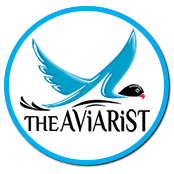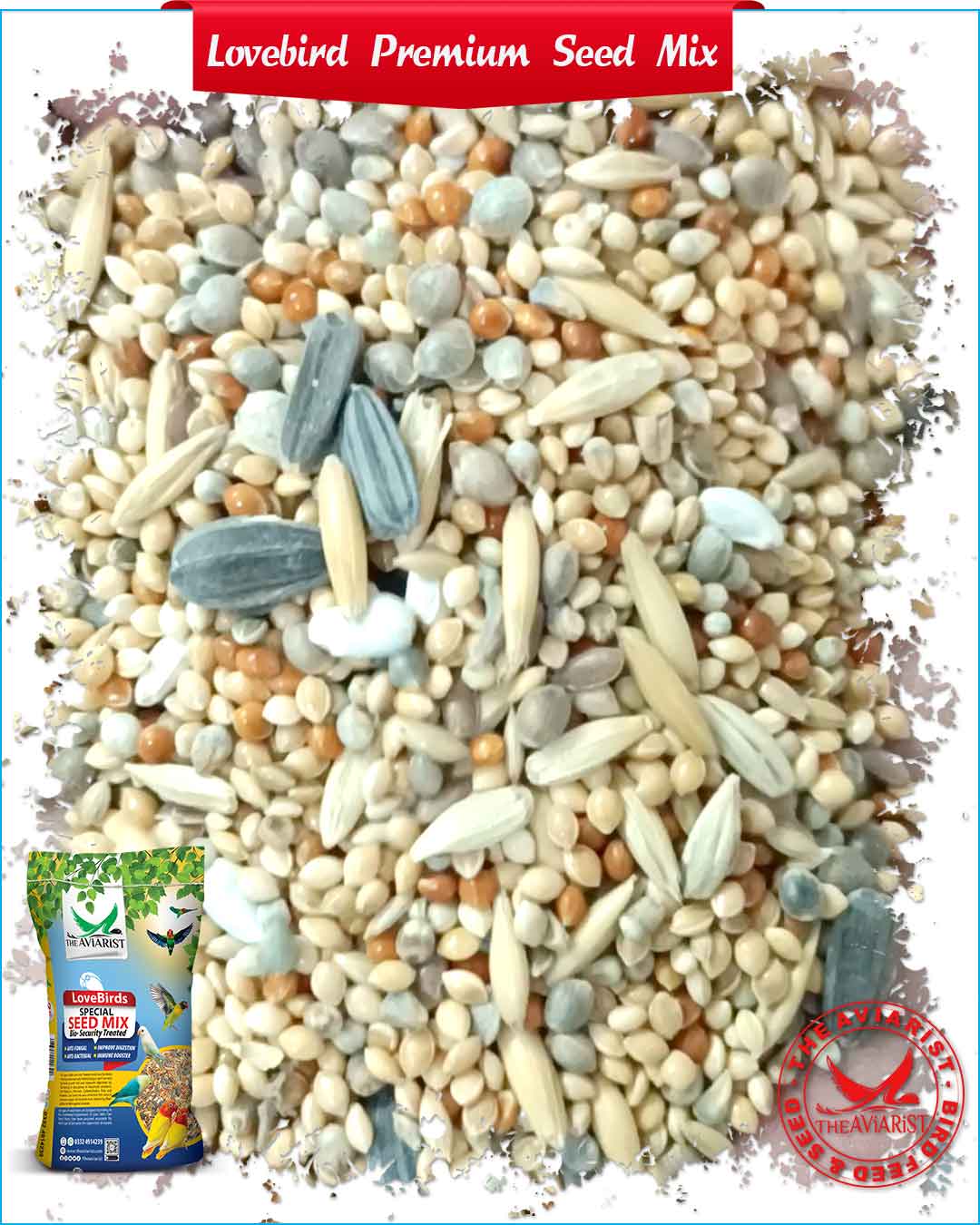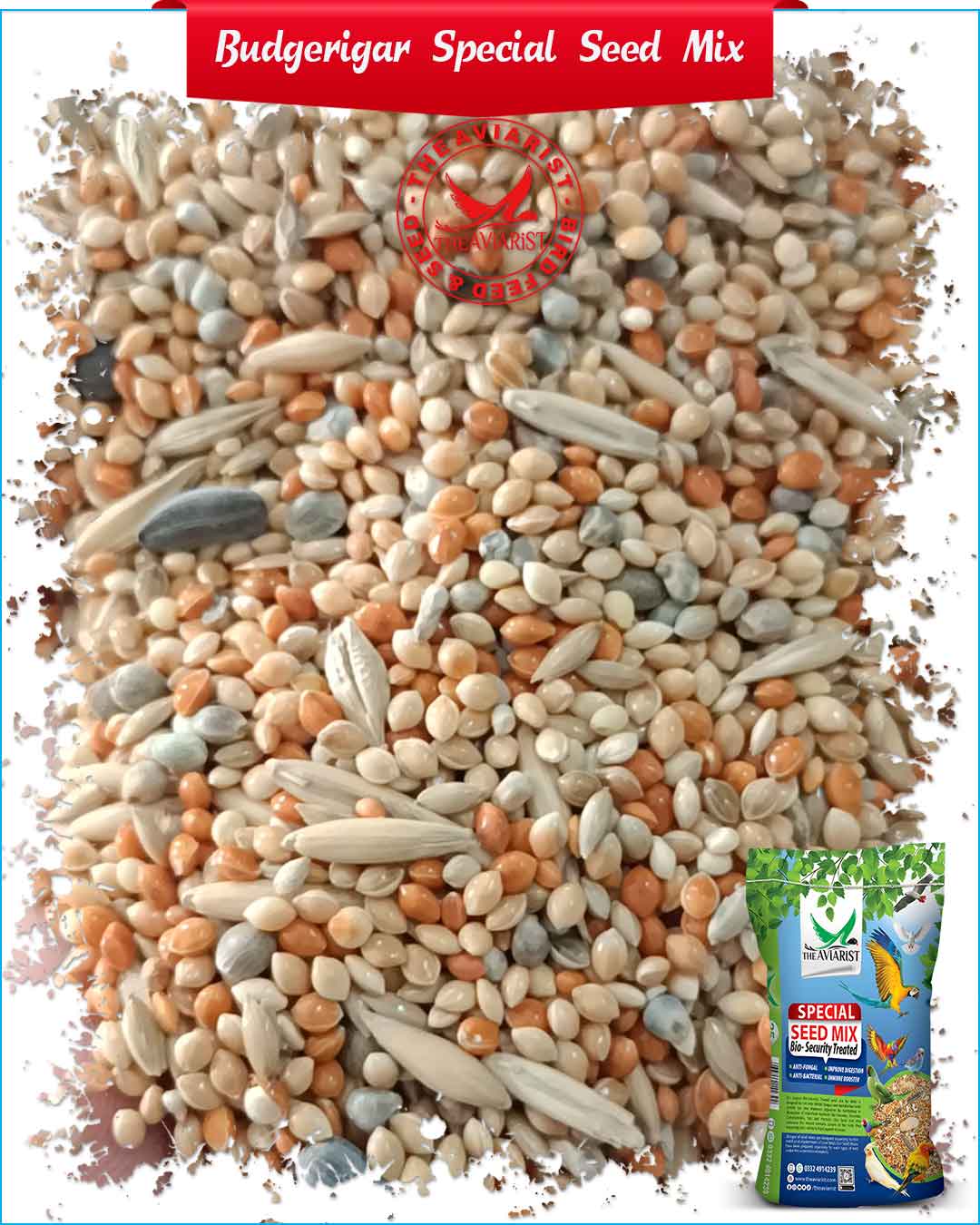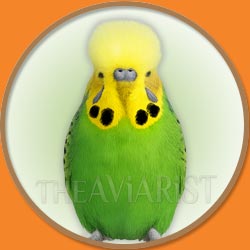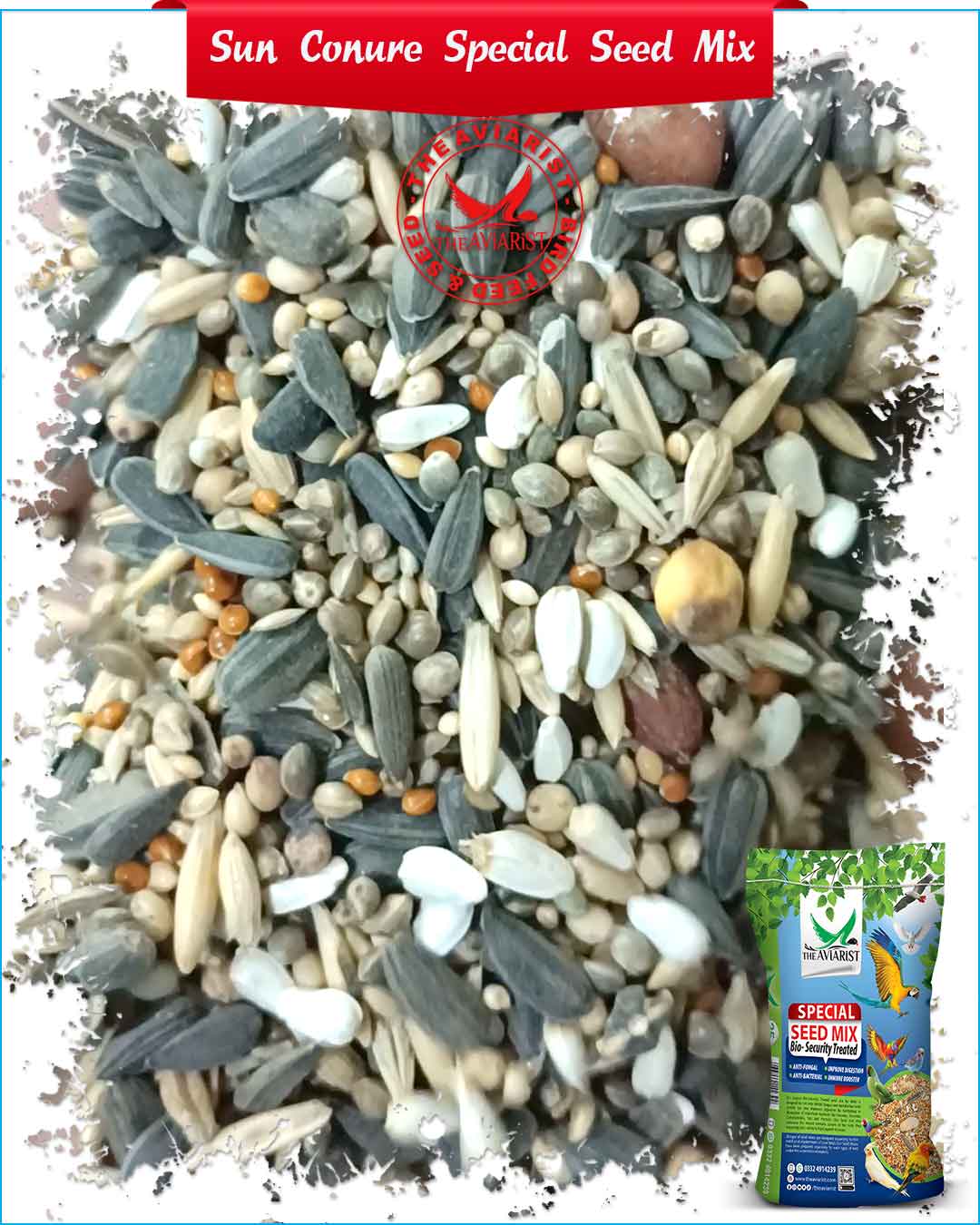Congo African Grey Parrot (CAG)
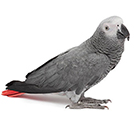
The Congo African Grey Parrot (Psittacus erithacus), often simply called the African Grey, is regarded as one of the most intelligent and talented parrots in the world. Native to the dense rainforests of Central Africa, particularly in countries like Congo, Cameroon, and Ghana, this species has earned global admiration for its exceptional talking ability, problem-solving skills, and affectionate companionship.
Their appearance is striking, with silvery-grey plumage, scalloped feather patterns, a black beak, pale eyes, and a vivid red tail that contrasts beautifully with the rest of the body. Their calm yet alert expression makes them easily recognizable.
Known for their intelligence, sensitivity, and strong bond with owners, these parrots thrive on mental stimulation and social interaction. They can learn hundreds of words, mimic voices, and even understand context, making them one of the most sought-after companion birds. However, they require consistent attention, enrichment, and training to prevent boredom and behavioral issues.
A Complete Nutrition
At The Aviarist, we understand that the health, vitality, and breeding success of African Grey Parrot depend largely on their diet. Our specially formulated Seed Mix for African Grey Parrot is bio-security treated, ensures that African Grey Parrot receive safe, clean, and nutrient-rich food that supports their feather health, energy levels, fertility, and overall wellbeing.
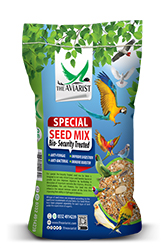
Special Seed Mix
Unlike ordinary seed mixes, our formula goes beyond just filling the seed cup. Every batch is carefully treated and enhanced to support the overall well-being, breeding performance, and immunity of your African Grey Parrot.
The Special Seed Mix is our core variant, trusted by many breeders. What makes it unique is that, it is regularly adjusted and upgraded according to seasonal changes and breeding requirements.
Tailored nutrition for breeder pairs
Adjusted fat and protein ratios for better breeding outcomes
Ensures strong fertility, better hatch rates, and healthier chicks
This mix is especially beneficial during pre-breeding and general breeding periods.
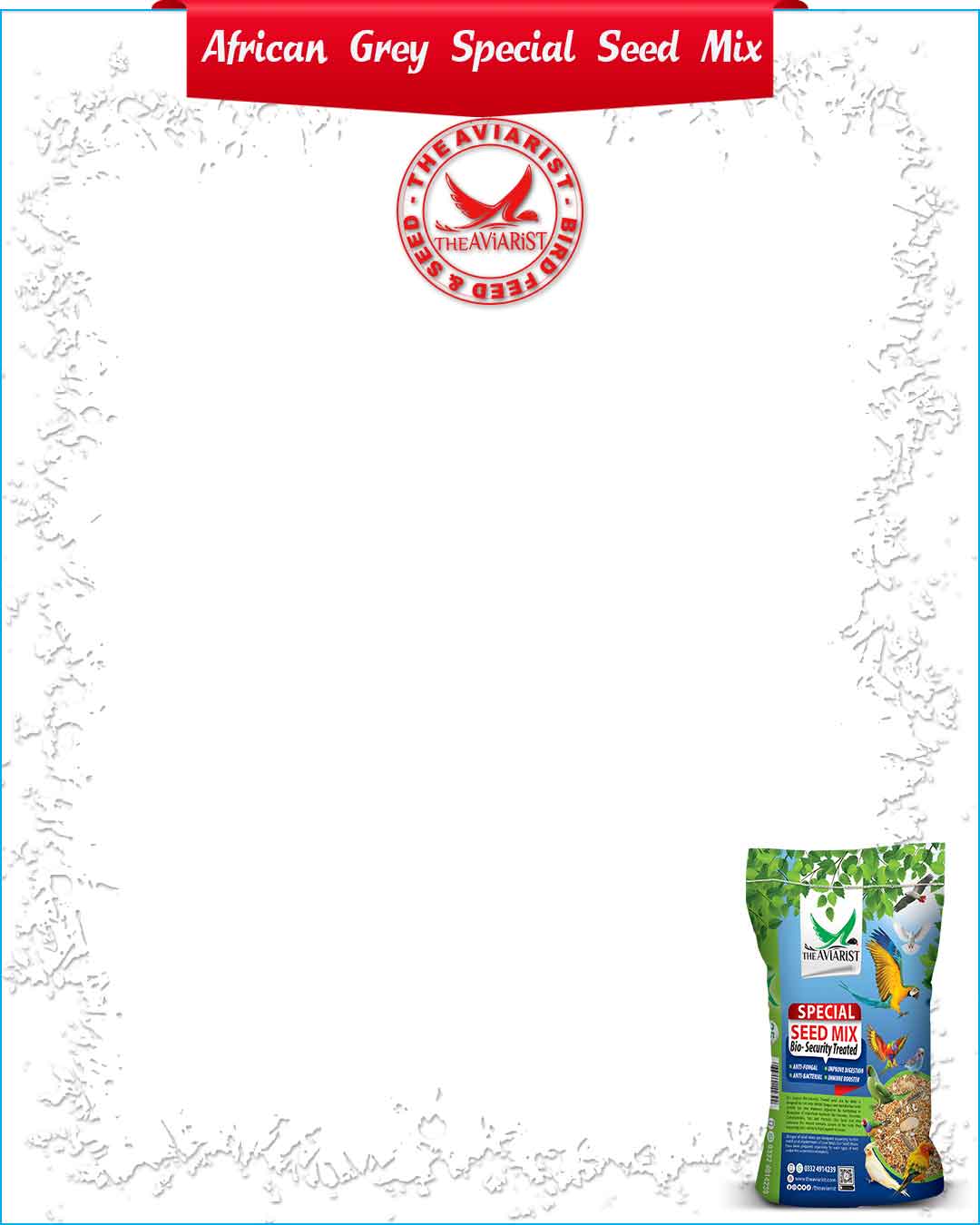
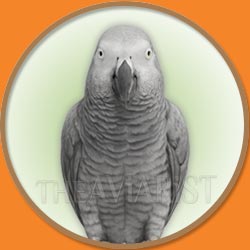
Key Ingredients:
| Ingredient | اجزاء |
| PROSO MILLET | سفید چینا |
| RED PROSO MILLET | لال چینا |
| PEARL MILLET | باجرہ |
| HEMP SEED | بھنگ کے بیج |
| SUNFLOWER SEED | سورج مکھی |
| SAFFLOWER SEED | قرتم |
| OAT SEED | (جوی (جئی |
| BARLEY SEED | جوء |
| WHITE SORGHUM | جوارسفید |
| STRIPED SUNFLOWER SEED | ایرانی سورج مکھی |
| PUMPKIN SEEDS | کدو کے بیج |
| WHEAT | گندم |
| CORN | مکئی |
| PEANUT | مونگ پھلی |
| RED CHILLI | سرخ مرچ |
| PEANUT KERNAL | مونگ پھلی دانہ |
| ROASTED CHICKPEAS | بھنے ہوئے چنے |
| SOY BEAN | سویابین |
Price Rs.300/Kg
Available in 10Kg & 25Kg Packing
Key Features
1. Bio-Security Treated Seeds
Every seed in our mix undergoes a strict bio-security process. This includes anti-fungal treatment that prevents the growth of harmful fungi such as Aspergillus, which can cause serious respiratory infections in birds. Additionally, the mix is treated to eliminate bad bacteria that often grow in untreated seeds and may lead to digestive or immune-related health problems.
2. Enhanced Digestion
Birds have a delicate digestive system that can sometimes struggle with raw seeds when kept in controled environment. To address this, our seed mix is enriched with special enzymes that aid in the breakdown and absorption of nutrients. These enzymes improve gut health, reduce digestive stress, and maximize nutrient utilization, ensuring that birds get the most from every seed they consume.
3. Immunity-Boosting Formula
A strong immune system is essential for protecting birds against common infections. Our blend is fortified with immunity-enhancing agents that help strengthen their natural defenses. This means your birds are better equipped to fight off seasonal illnesses, bacterial challenges, and environmental stressors.
4. Species-Specific Nutrition
Unlike generic bird seed blends, The Aviarist seed mix is specially crafted for species specific, keeping their natural habitat and dietary patterns in mind. The selected seeds provide the right balance of proteins, healthy fats, vitamins, and minerals that match their natural dietary needs.
Benefits
Healthier Plumage & Brighter Colors
Proper nutrition enhances feather quality, resulting in shinier, stronger, and more vibrant plumage—a sign of a healthy bird.
Boosted Energy & Vitality
With a balanced nutritional profile, birds remain more active, playful, and energetic, reflecting their natural behavior.
Stronger Immunity Against Diseases
The immunity boosting shield protect birds from bacterial and viral threats.
Improved Digestion & Nutrient Absorption
The added enzymes prevent bloating, indigestion, and seed waste, ensuring maximum nutritional benefit.
Longevity & Quality of Life
A safe and nutrient-rich diet contributes to a longer, healthier, and happier life for birds.
Breeding Benefits
Bird breeding requires an optimal diet rich in energy, proteins, and essential micronutrients. The Aviarist Seed Mix is designed to support the breeding cycle in several ways:
Enhanced Fertility in Pairs
Nutrient-rich seeds, combined with immune-boosting agents, improve fertility rates and increase the chances of successful breeding.
Stronger Egg Production
The bio-secure and enzyme-treated formula ensures the hen’s body efficiently absorbs calcium and proteins, leading to stronger, healthier eggs with better hatchability.
Healthy Chick Growth
Parents fed on this seed mix pass on enhanced nutrition to their chicks, ensuring stronger immunity, better feather growth, and healthy development from the very first days.
Reduced Breeding Stress
With improved digestion and higher energy reserves, breeding pairs remain less stressed during mating and chick-rearing, resulting in more consistent breeding success.
Congo African Grey
The Genius of the Parrot World
The Congo African Grey Parrot is one of the most intelligent and iconic parrot species in the world, widely admired for its exceptional talking ability and problem-solving skills. Native to the dense rainforests of West and Central Africa, this bird has earned the title of the “Einstein of the bird world” due to its advanced learning and mimicry capacity.
In terms of care, Congo African Greys need a spacious cage or aviary, a varied diet of pellets, fresh vegetables, fruits, sprouts, and nuts, as well as plenty of toys and foraging opportunities. With proper care, they can live for 40–60 years, making them long-term companions and a treasured species in aviculture.
Appearance
The Congo African Grey is a medium-to-large parrot, measuring around 12–14 inches (30–35 cm) in length and weighing between 400–500 grams with a wingspan of approximately 18–20 inches. Its elegant plumage consists of soft grey feathers , a striking bright red tail , and a powerful black beak . Its piercing pale eyes add to its dignified and majestic presence.
This distinguished look, combined with its intelligence, makes the Congo African Grey one of the most iconic parrots kept in captivity.
Personalityand Behavior
The Congo African Grey is famously known as the “Einstein of the bird world.” These parrots possess extraordinary cognitive abilities, capable of learning hundreds of words, mimicking human voices with stunning accuracy, and even understanding context in some situations. Their intelligence often rivals that of young children, making them both fascinating and demanding companions.
While highly affectionate and loyal to their owners, African Greys can also be sensitive and cautious. They thrive in stable, nurturing environments and require daily interaction to prevent loneliness and stress. Once bonded, they form deep emotional connections with their caretakers and often become lifelong companions.
Care and Diet
Caring for a Congo African Grey requires dedication to both their physical and mental needs. A balanced diet should include:
- Seed mix designed for large parrots.
- A wide range of fresh fruits and vegetables (carrots, apples, leafy greens, bell peppers, corn, etc.).
- Occasional nuts like walnuts, almonds, and cashews as enrichment treats.
- Calcium sources such as cuttlebone or mineral blocks to maintain strong bones and beak health.
In addition to diet, African Greys need constant mental stimulation. Puzzle toys, foraging activities, training sessions, and daily social interaction are essential to prevent boredom and behavioral issues like feather plucking.
With proper care, Congo African Greys can live 50–60 years or more , making them a truly lifelong commitment.
Congo African Greys in Aviculture
Due to their intelligence and talking ability, Congo African Greys are one of the most sought-after parrots in aviculture. They are also excellent breeders when provided with the right conditions. However, they require careful handling and early socialization to ensure they remain friendly, confident, and well-adjusted.
Why Choose a Congo African Grey?
For bird lovers seeking a companion with unmatched intelligence and personality, the Congo African Grey is a remarkable choice. Their ability to mimic speech, their affectionate bonds, and their majestic beauty make them stand out as one of the most extraordinary parrot species in the world.
Owning a Congo African Grey is not just about keeping a pet—it is about welcoming a highly intelligent, sensitive, and loyal companion into your life for decades.
Nutritional Requirements
The Congo African Grey Parrot is one of the most intelligent parrot species, with a lifespan of 40–60 years. Because of their high intelligence, large size, and active metabolism , they require a nutritionally rich, balanced diet to maintain strong immunity, sharp cognition, and brilliant plumage.
Here’s a complete breakdown of their nutritional requirements :
Macronutrients
Protein
- Maintenance (pets/companions): 12–15% of diet.
- Breeding & chick-rearing: 16–18%.
- Molting season: 14–16% for feather regeneration.
Role: - Supports muscle maintenance, brain development, feather growth, and fertility.
Fat
- Optimal range: 6–10% of diet.
- Active/breeding birds: Can be raised to 11–12% temporarily.
- Caution: African Greys are prone to obesity and fatty liver disease if fat intake is too high.
Role: - Provides energy, enhances vitamin absorption, keeps plumage sleek.
Carbohydrates & Fiber
- 50–55% of diet. Supplies steady energy and gut health.
Vitamins
- Vitamin A: Essential for skin, eyesight, and feather brightness. (Carrots, pumpkin, kale, red peppers).
- Vitamin D3: Critical for calcium absorption. African Greys are highly prone to hypocalcemia (low calcium) if Vitamin D3 is lacking. (Natural sunlight or supplements required).
- Vitamin E: Fertility and antioxidant support.
- Vitamin K: Aids blood health and bone formation.
- B-Complex Vitamins: Energy metabolism, nervous system health, and feather conditioning.
Minerals
- Calcium: 1.5–2% of diet (higher than most parrots due to Grey’s tendency toward hypocalcemia).
- Phosphorus: Balanced with calcium (Ca\P ratio 2:1).
- Magnesium, Zinc, Selenium, Iodine, Iron: Needed in trace amounts for immunity, metabolism, and strong fertility.
- Always provide cuttlebone, mineral blocks, or calcium supplements.
Breeding Season Requirement
- Protein: Raise to 16–18% for chick development.
- Fat: Slightly increased ( 9–11% ) to meet higher energy demand.
- Calcium & Vitamin D3: Must be boosted to prevent egg binding and weak chick bones.
- Soft foods: Sprouted legumes, soaked grains, and chopped vegetables help parents feed chicks easily.
Water
Fresh, clean water must always be available. Even mild dehydration causes stress, poor digestion, and reduced breeding performance.
Breeding Care
Breeding the Congo African Grey Parrot requires careful management, patience, and dedication, as this species is both intelligent and sensitive. Successful breeding depends on providing a secure, healthy, and stress-free environment, along with proper nutrition and nest facilities.
First, breeders must ensure they have a compatible, mature pair, African Greys typically reach sexual maturity around 5–7 years of age. Pairs should be housed in a spacious aviary that allows privacy, as these parrots are easily disturbed during the breeding cycle. A strong wooden nest box, approximately 12 x 12 x 24 inches, should be installed in a quiet location, filled with clean wood shavings or other safe nesting material.
Diet plays a critical role in breeding success. A balanced mix of high-quality pellets, fresh vegetables, leafy greens, fruits, sprouts, and calcium-rich supplements helps support egg development and chick growth. Fresh water and cuttlebone or mineral blocks should always be available.
The female typically lays 2–4 eggs, which she incubates for about 28–30 days, while the male provides food and protection. Chicks are usually weaned by 10–12 weeks, though hand-rearing may be done in commercial breeding to enhance tameness and socialization. During chick-rearing, additional protein and soft foods are essential for the parents to feed their young.
It is equally important to minimize stress and disturbance during breeding, as African Greys are cautious by nature and may abandon their nest if they feel unsafe. Regular but discreet monitoring ensures both parents and chicks remain healthy.
With proper care, Congo African Grey breeding can be highly rewarding, producing strong, intelligent chicks that become excellent companions. Responsible breeding not only supports their popularity in aviculture but also helps reduce the demand for wild-caught birds, contributing to species conservation.
Breeding Congo African Grey Parrots requires careful preparation and responsible management. Below is a structured guide to help ensure success:
1. Pair Selection & Bonding
Choose healthy, unrelated parrots that are DNA-sexed (one male, one female).
Ideal breeding age: 5–7 years and older.
Allow them to bond naturally in a quiet, stress-free environment before introducing a nest box.
2. Housing & Environment
Provide a spacious aviary or large cage (minimum 6 ft long x 4 ft wide x 6 ft high).
Place the enclosure in a quiet location away from excessive noise and disturbances.
Ensure privacy, covering parts of the aviary can reduce stress during breeding.
3. Nesting Setup
Install a strong wooden nest box: approx. 12" x 12" x 24" (deep design preferred).
Entrance hole: 4–5 inches in diameter.
Place the box at a higher level in the aviary for security.
Line with clean wood shavings (avoid cedar) or untreated sawdust.
4. Nutrition for Breeding
Base diet: pellets, mixed seeds, vegetables, leafy greens, fruits, and sprouts.
Add calcium sources (cuttlebone, mineral blocks, or calcium supplements) to support egg formation.
Provide protein-rich foods (boiled eggs, legumes, soaked pulses) during breeding and chick-rearing.
Fresh, clean water must always be available.
5. Courtship & Egg Laying
The pair will display bonding behaviors (feeding each other, preening).
Female usually lays 2–4 eggs.
Incubation lasts about 28–30 days, mainly by the female while the male feeds her.
6. Chick Rearing
Chicks hatch blind and featherless, requiring warmth and frequent feeding.
Parents usually care well, but breeders must monitor for neglect.
Chicks fledge at around 10–12 weeks.
Hand-rearing (if chosen) should only be done by experienced breeders to ensure proper development.
7. Hygiene & Health Monitoring
Keep the nest box and aviary clean and dry to prevent infections.
Regularly check for mites, bacterial growth, or respiratory issues.
Provide access to an avian vet for check-ups and emergencies.
8. Post-Breeding Care
Allow parents to rest before the next breeding cycle (usually 1–2 clutches per year is recommended).
Provide a balanced diet to restore the female’s energy and calcium levels.
Gradually socialize chicks to make them friendly and adaptable as companions.
With careful management, breeding Congo African Grey Parrots can be both commercially rewarding and conservation-supportive, provided it is done ethically and responsibly.
Commercial Breeding of African Grey Parrot
The Congo African Grey Parrot holds a very high commercial value in aviculture because of its unmatched intelligence, long lifespan, and exceptional talking ability. Recognized as one of the best mimics among all bird species, it remains one of the most sought-after companion parrots across the world.
One of the primary reasons for its strong market demand is its communication skills, many Congo African Greys can develop vocabularies of hundreds of words and mimic human voices with astonishing accuracy. This trait, combined with their gentle personality, makes them highly desirable pets, often fetching premium prices in the pet trade.
From a breeding standpoint, Congo African Greys usually produce 2–4 eggs per clutch, with incubation lasting around 28 days. Pairs can typically raise 1–2 clutches per year when managed responsibly. While their clutch size is smaller compared to smaller parakeets, the higher individual market value of each chick more than compensates.
Selective breeding has also increased demand, as hand-reared and well-socialized chicks are especially prized for their tameness and trainability. Additionally, because these parrots can live 40–60 years, buyers view them as lifelong companions, ensuring stable demand in both domestic and international markets.
However, due to their popularity, legal and ethical breeding is essential. Many countries regulate or restrict trade of African Greys under CITES (Convention on International Trade in Endangered Species), meaning breeders must follow strict registration and welfare standards. Responsible, licensed breeders who maintain high-quality care and transparency often gain trust and repeat customers.
In summary, the Congo African Grey is not only an extraordinary pet but also a high-value species in commercial aviculture. With ethical breeding, proper care, and adherence to international laws, it offers breeders both economic benefits and the opportunity to conserve one of the world’s most intelligent bird species.
Why The Aviarist Seed Mix?
To maintain excellent health, the Congo African Grey requires a diet with 12–15% protein (16–18% during breeding), 6–10% fat, high calcium (1.5–2%), and a balance of essential vitamins & minerals. With a scientifically balanced diet like The Aviarist - Seed Mix, Greys can thrive with strong immunity, vibrant plumage, and excellent breeding success.
